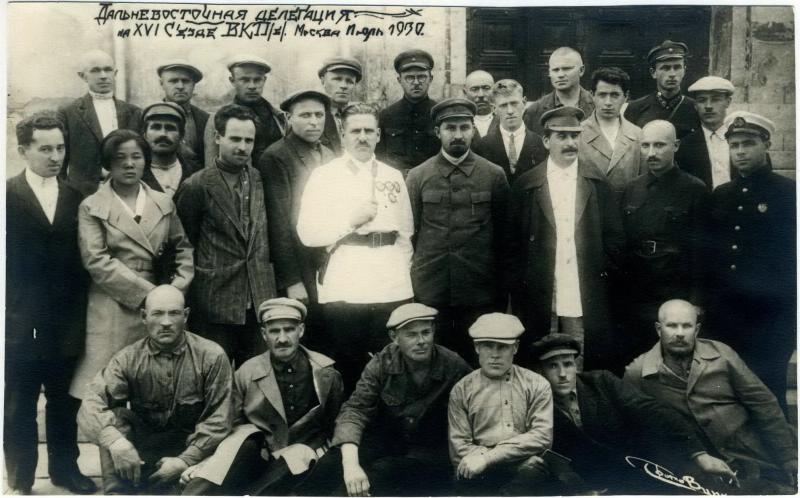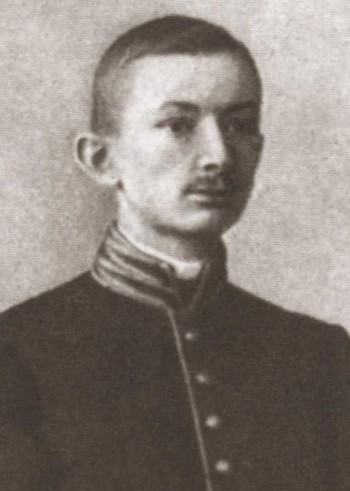|
Spaso House
Spaso House is a listed Neoclassical Revival building at No. 10 Spasopeskovskaya Square in Moscow. It was originally built in 1913 as the mansion of the textile industrialist Nikolay Vtorov. Since 1933, it has been the residence of the U.S. Ambassador to the Soviet Union, and since 1991, to the Russian Federation. The building belonged to the USSR and later Russia and, under the 1985 lease contract, the U.S. was supposed to pay 72,500 Soviet roubles per year, which by 2001 was the equivalent of about $3, which the U.S. had failed to pay in 1993. In 2004, the two sides concluded a new 49-year lease that was said to be based on a joint assessment of the property's value; the rent rate was not disclosed. History Early history Spaso House takes its name from Spasopeskovskaya Square, in the Arbat District. "Spasopeskovskaya" meant "Saviour on the Sands", referring to the sandy soil of the neighborhood, which was first settled in the seventeenth century. Most of the original ... [...More Info...] [...Related Items...] OR: [Wikipedia] [Google] [Baidu] |
Empire Style
The Empire style (, ''style Empire'') is an early-nineteenth-century design movement in architecture, furniture, other decorative arts, and the visual arts, representing the second phase of Neoclassicism. It flourished between 1800 and 1815 during the Consulate and the First French Empire periods, although its life span lasted until the late-1820s. From France it spread into much of Europe and the United States. The Empire style originated in and takes its name from the rule of the Emperor Napoleon I in the First French Empire, when it was intended to idealize Napoleon's leadership and the French state. The previous fashionable style in France had been the Directoire style, a more austere and minimalist form of Neoclassicism that replaced the Louis XVI style, and the new Empire style brought a full return to ostentatious richness. The style corresponds somewhat to the Biedermeier style in the German-speaking lands, Federal style in the United States, and the Regency style in Br ... [...More Info...] [...Related Items...] OR: [Wikipedia] [Google] [Baidu] |
Lazar Kaganovich
Lazar Moiseyevich Kaganovich, also Kahanovich (russian: Ла́зарь Моисе́евич Кагано́вич, Lázar' Moiséyevich Kaganóvich; – 25 July 1991), was a Soviet politician and administrator, and one of the main associates of Joseph Stalin. He was one of several associates who helped Stalin to seize power, demonstrating exceptional brutality towards those deemed threats to Stalin's regime and facilitating the executions of thousands of people. Born to Jewish parents in modern Ukraine (then part of the Russian Empire) in 1893, Kaganovich was the son of Moisei Benovich Kaganovich (1863-1923) and Genya Iosifovna Dubinskaya (1860-1933). Of the 13 children born to the family, 6 died in infancy. Lazar had four elder brothers, all of whom became members of the Bolshevik party. Several of Lazar's brothers ended up occupying positions of varying significance in the Soviet government. Mikhail Kaganovich (1888–1941) served as People's Commissar of Defence Industry bef ... [...More Info...] [...Related Items...] OR: [Wikipedia] [Google] [Baidu] |
Nikolai Bukharin
Nikolai Ivanovich Bukharin (russian: Никола́й Ива́нович Буха́рин) ( – 15 March 1938) was a Bolshevik revolutionary, Soviet politician, Marxist philosopher and economist and prolific author on revolutionary theory. As a young man, he spent six years in exile working closely with fellow exiles Vladimir Lenin and Leon Trotsky. After the revolution of February 1917, he returned to Moscow, where his Bolshevik credentials earned him a high rank in the party, and after the October Revolution became editor of their newspaper ''Pravda.'' Within the Bolshevik Party, Bukharin was initially a left communist, but gradually moved to the right from 1921. His strong support for and defence of the New Economic Policy (NEP) eventually saw him lead the Right Opposition. By late 1924, this stance had positioned Bukharin favourably as Joseph Stalin's chief ally, with Bukharin soon elaborating Stalin's new theory and policy of Socialism in One Country. Together, Bukh ... [...More Info...] [...Related Items...] OR: [Wikipedia] [Google] [Baidu] |
Kliment Voroshilov
Kliment Yefremovich Voroshilov (, uk, Климент Охрімович Ворошилов, ''Klyment Okhrimovyč Vorošylov''), popularly known as Klim Voroshilov (russian: link=no, Клим Вороши́лов, ''Klim Vorošilov''; 4 February 1881 – 2 December 1969), was a prominent Soviet military officer and politician during the Stalin era. He was one of the original five Marshals of the Soviet Union, the highest military rank of the Soviet Union, and served as Chairman of the Presidium of the Supreme Soviet, the nominal Soviet head of state, from 1953 to 1960. Born to a Russian worker's family in modern Ukraine, Voroshilov took part in the Russian Revolution of 1917 as an early member of the Bolsheviks. He served with distinction at the Battle of Tsaritsyn, during which he became a close friend of Stalin. Voroshilov was elected to the Central Committee of the Communist Party in 1921, and in 1925 Stalin appointed him People's Commissar for Military and Navy Affair ... [...More Info...] [...Related Items...] OR: [Wikipedia] [Google] [Baidu] |
Maxim Litvinov
Maxim Maximovich Litvinov (; born Meir Henoch Wallach; 17 July 1876 – 31 December 1951) was a Russian revolutionary and prominent Soviet statesman and diplomat. A strong advocate of diplomatic agreements leading towards disarmament, Litvinov was influential in making the Soviet Union a party to the Kellogg–Briand Pact of 1928 and was chiefly responsible in 1929 for adoption of the so-called Litvinov Protocol, a multilateral agreement bringing Kellogg-Briand into force between the Soviet Union and a number of neighboring states. In 1930, Litvinov was named as People's Commissar of Foreign Affairs, the highest diplomatic position in the Soviet state. During the subsequent decade, Litvinov emerged as a leading voice for the official Soviet policy of collective security with the Western powers against Nazi Germany. Early life and first exile Meir Henoch Wallach was born into a wealthy, Yiddish-speaking Lithuanian Jewish banking family in Białystok, Grodno Governorate of th ... [...More Info...] [...Related Items...] OR: [Wikipedia] [Google] [Baidu] |
Monticello
Monticello ( ) was the primary plantation of Founding Father Thomas Jefferson, the third president of the United States, who began designing Monticello after inheriting land from his father at age 26. Located just outside Charlottesville, Virginia, in the Piedmont region, the plantation was originally , with Jefferson using the labor of enslaved Africans for extensive cultivation of tobacco and mixed crops, later shifting from tobacco cultivation to wheat in response to changing markets. Due to its architectural and historic significance, the property has been designated a National Historic Landmark. In 1987, Monticello and the nearby University of Virginia, also designed by Jefferson, were together designated a UNESCO World Heritage Site. The current nickel, a United States coin, features a depiction of Monticello on its reverse side. Jefferson designed the main house using neoclassical design principles described by Italian Renaissance architect Andrea Palladio and rew ... [...More Info...] [...Related Items...] OR: [Wikipedia] [Google] [Baidu] |
George F
George may refer to: People * George (given name) * George (surname) * George (singer), American-Canadian singer George Nozuka, known by the mononym George * George Washington, First President of the United States * George W. Bush, 43rd President of the United States * George H. W. Bush, 41st President of the United States * George V, King of Great Britain, Ireland, the British Dominions and Emperor of India from 1910-1936 * George VI, King of Great Britain, Ireland, the British Dominions and Emperor of India from 1936-1952 * Prince George of Wales * George Papagheorghe also known as Jorge / GEØRGE * George, stage name of Giorgio Moroder * George Harrison, an English musician and singer-songwriter Places South Africa * George, Western Cape ** George Airport United States * George, Iowa * George, Missouri * George, Washington * George County, Mississippi * George Air Force Base, a former U.S. Air Force base located in California Characters * George (Peppa Pig), a 2-year-old pig ... [...More Info...] [...Related Items...] OR: [Wikipedia] [Google] [Baidu] |
William C
William is a male given name of Germanic origin.Hanks, Hardcastle and Hodges, ''Oxford Dictionary of First Names'', Oxford University Press, 2nd edition, , p. 276. It became very popular in the English language after the Norman conquest of England in 1066,All Things William"Meaning & Origin of the Name"/ref> and remained so throughout the Middle Ages and into the modern era. It is sometimes abbreviated "Wm." Shortened familiar versions in English include Will, Wills, Willy, Willie, Bill, and Billy. A common Irish form is Liam. Scottish diminutives include Wull, Willie or Wullie (as in Oor Wullie or the play ''Douglas''). Female forms are Willa, Willemina, Wilma and Wilhelmina. Etymology William is related to the given name ''Wilhelm'' (cf. Proto-Germanic ᚹᛁᛚᛃᚨᚺᛖᛚᛗᚨᛉ, ''*Wiljahelmaz'' > German ''Wilhelm'' and Old Norse ᚢᛁᛚᛋᛅᚼᛅᛚᛘᛅᛋ, ''Vilhjálmr''). By regular sound changes, the native, inherited English form of th ... [...More Info...] [...Related Items...] OR: [Wikipedia] [Google] [Baidu] |
Lev Karakhan
Lev Mikhailovich Karakhan (''Karakhanian'') Armenian Լևոն Միքայելի Կարախանյան, Russian Лев Михайлович Карахан (20 January 1889, Tiflis – 20 September 1937, Moscow) was a Russian revolutionary and a Soviet diplomat. A member of the RSDLP from 1904. At first a Menshevik, he joined the Bolsheviks in May 1917. In October 1917, he was member of the Revolutionary Military Council; then served as secretary of the Soviet delegation at the Brest-Litovsk peace talks together with Leon Trotsky and Adolph Joffe. In 1918-1920 and 1927–1934, he was the Deputy People's Commissar for Foreign Affairs. In 1919, he issued a statement concerning relations with China called the Karakhan Manifesto. In 1921, he was the Soviet Ambassador to Poland; in 1923–1926, the Ambassador to China; after 1934, the Ambassador to Turkey. Karakhan was known for his dandyish appearance; Karl Radek is quoted as having "maliciously described" him as "the Ass of Classi ... [...More Info...] [...Related Items...] OR: [Wikipedia] [Google] [Baidu] |
Georgi Chicherin
Georgy Vasilyevich Chicherin (24 November 1872 – 7 July 1936), also spelled Tchitcherin, was a Russian Marxist revolutionary and a Soviet politician who served as the first People's Commissar for Foreign Affairs in the Soviet government from March 1918 to July 1930. Childhood and early career A distant relative of Aleksandr Pushkin, Georgy Chicherin was born into an old noble family. He was born on the estate of his uncle, Boris Chicherin, in Karaul, Tambov. His father, Vasily N. Chicherin, was a diplomat employed by the Foreign Office of the Russian Empire. His uncle was an influential legal philosopher and historian. As a young man, Chicherin became fascinated with history; classical music, especially Richard Wagner; and Friedrich Nietzsche, passions that he would pursue throughout his life. He wrote a book about Wolfgang Amadeus Mozart and spoke all major European languages and a number of Asian ones. After graduating from St. Petersburg University with a degree in history ... [...More Info...] [...Related Items...] OR: [Wikipedia] [Google] [Baidu] |
Palladian Window
Palladian architecture is a European architectural style derived from the work of the Venetian architect Andrea Palladio (1508–1580). What is today recognised as Palladian architecture evolved from his concepts of symmetry, perspective and the principles of formal classical architecture from ancient Greek and Roman traditions. In the 17th and 18th centuries, Palladio's interpretation of this classical architecture developed into the style known as Palladianism. Palladianism emerged in England in the early 17th century, led by Inigo Jones, whose Queen's House at Greenwich has been described as the first English Palladian building. Its development faltered at the onset of the English Civil War. After the Stuart Restoration, the architectural landscape was dominated by the more flamboyant English Baroque. Palladianism returned to fashion after a reaction against the Baroque in the early 18th century, fuelled by the publication of a number of architectural books, including Pall ... [...More Info...] [...Related Items...] OR: [Wikipedia] [Google] [Baidu] |





